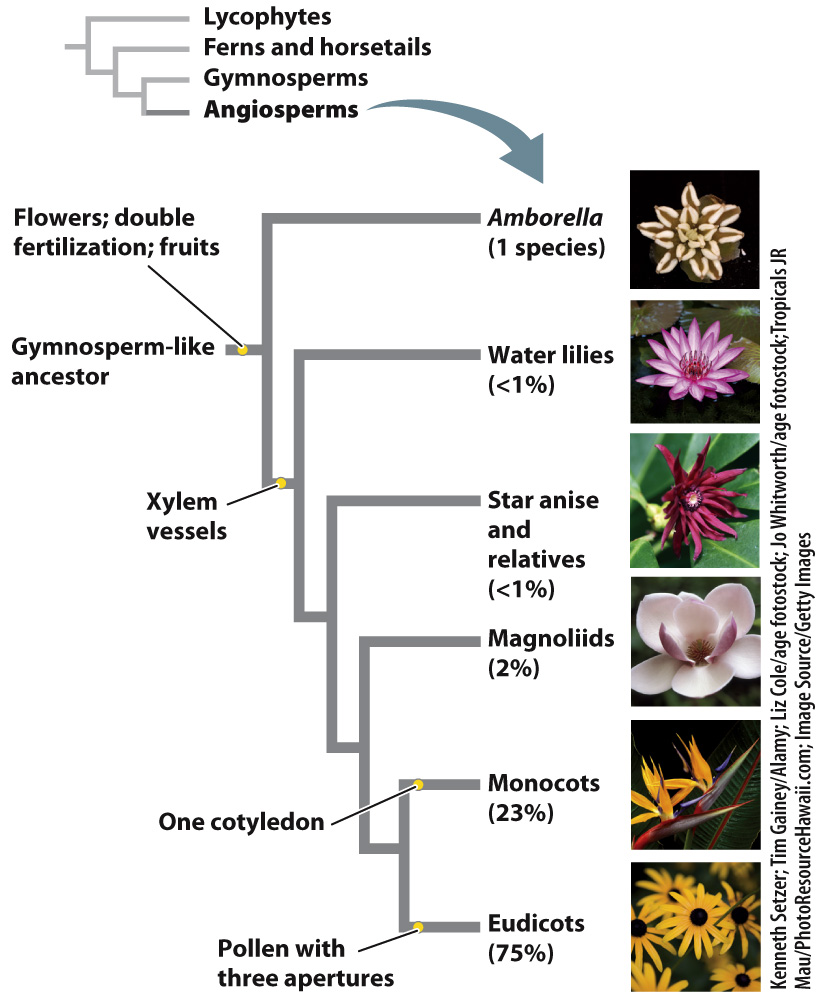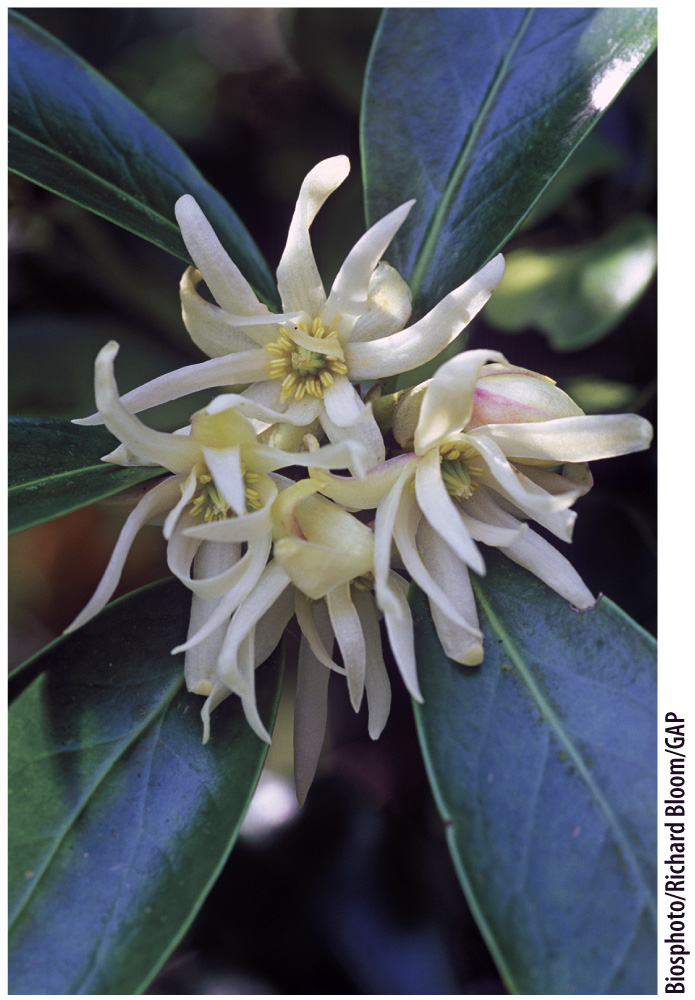Angiosperms may have originated in the shady understory of tropical forests.
The last common ancestor of angiosperms and living gymnosperms is thought to have lived more than 300 million years ago. Yet the first unambiguous fossils of angiosperms appear in rocks about 140 million years ago. This 160-

703
Recall from Chapter 30 that flowers are a plant’s way of enlisting animals to help them reproduce. Brightly colored petals and volatile scents advertise the presence of flowers, while rewards such as nectar encourage pollinators to return repeatedly to individuals of the same species. Because many flowers produce pollen and ovules close to each other, the movement of animals from one flower to another provides an efficient mode of pollen transfer.

Insect pollination may have allowed the first angiosperms to exploit understory habitats of tropical rain forests. Wind provides an effective means of pollen transfer in open habitats or in plants that can produce reproductive structures at the top of the canopy. In the dense understory of a tropical forest, the likelihood that air movements alone would bring pollen to an ovule is close to zero. All of the living members of the earliest angiosperm groups produce flowers that are visited by insects. Fig. 33.20 shows the flower of Japanese star anise, which is visited by beetles. The fruit of a close relative (Illicium verum) is the source of a popular seasoning used in Asian cooking.
Let’s turn now to a second important feature of angiosperms, the formation of wood containing xylem vessels. In the humid understory of a tropical forest, where transpiration rates are extremely low, there would seem to be little advantage in producing wood with a greater capacity for water transport. In fact, the sole existing species of the earliest-
704
Instead, the formation of separate cell types for water transport and mechanical support may have given the early angiosperms greater flexibility of form. Vines and sprawling shrubs are two examples of growth forms exhibited by early diverging angiosperms. Both growth forms allow plants to grow toward small patches of sunlight that filter through the forest canopy. In the heavily shaded tropical rain forest understory, this ability may have provided a distinct advantage.